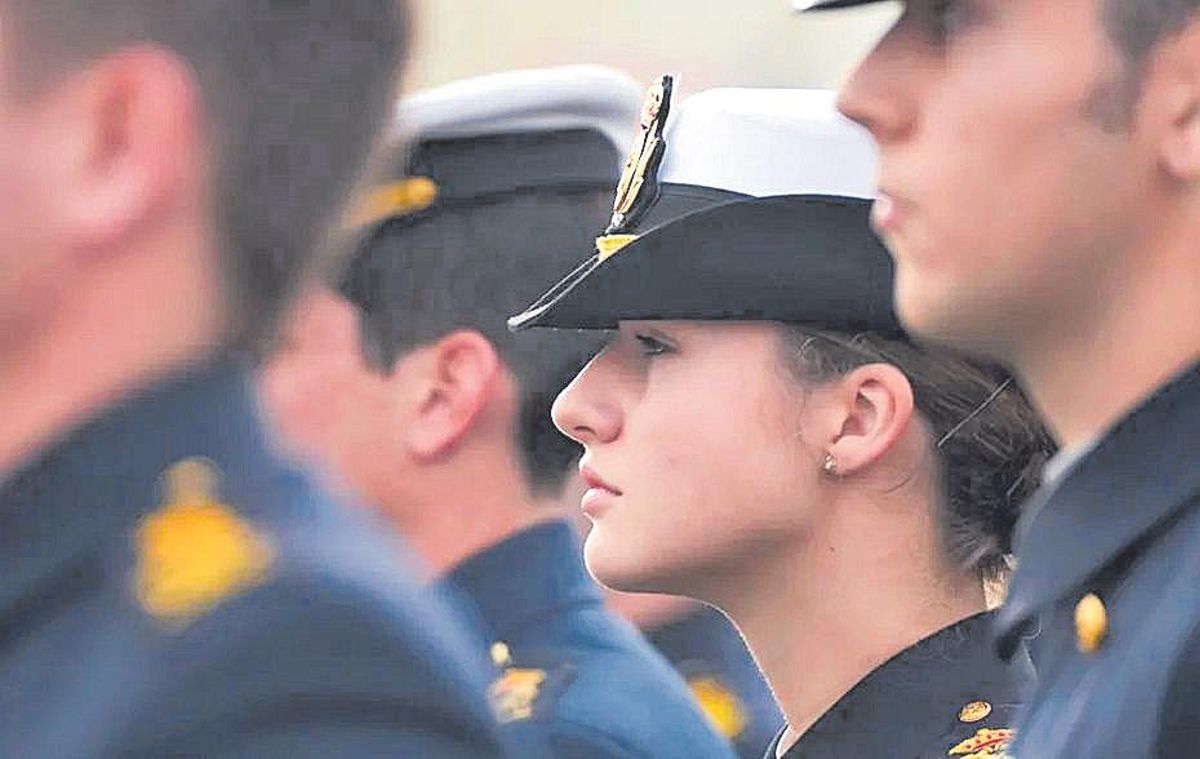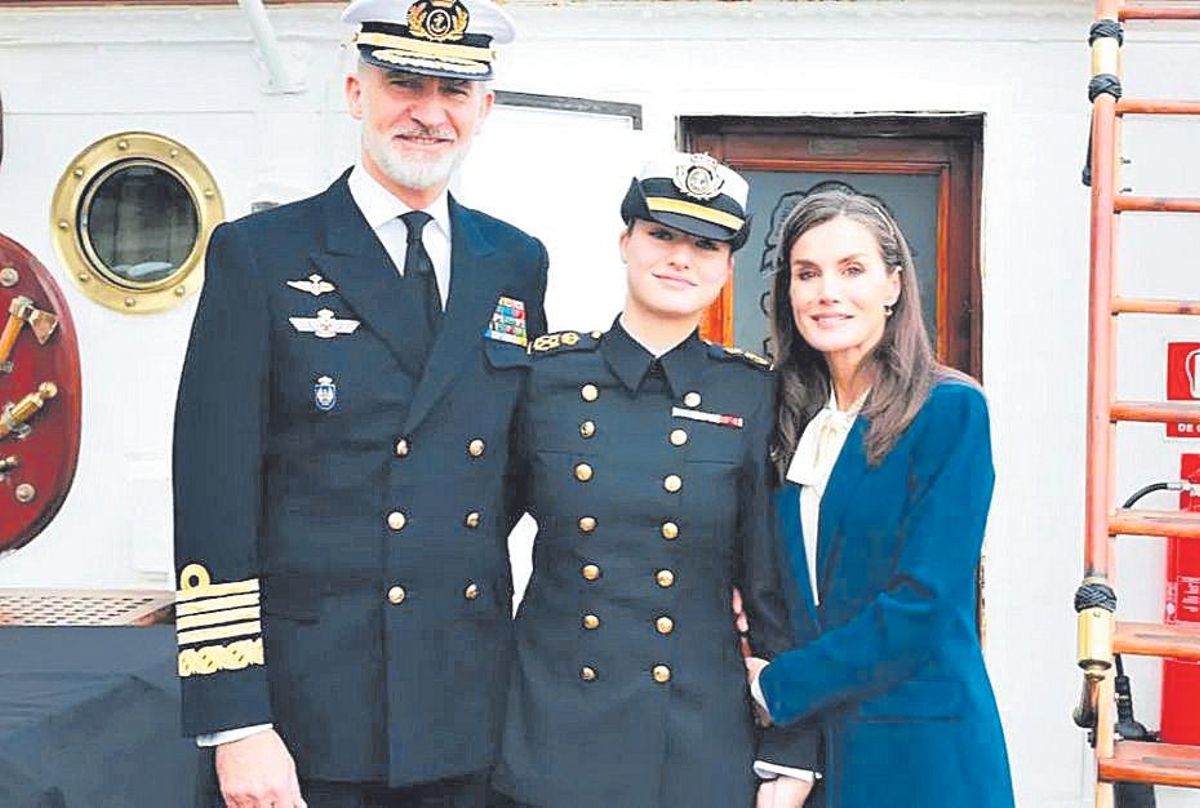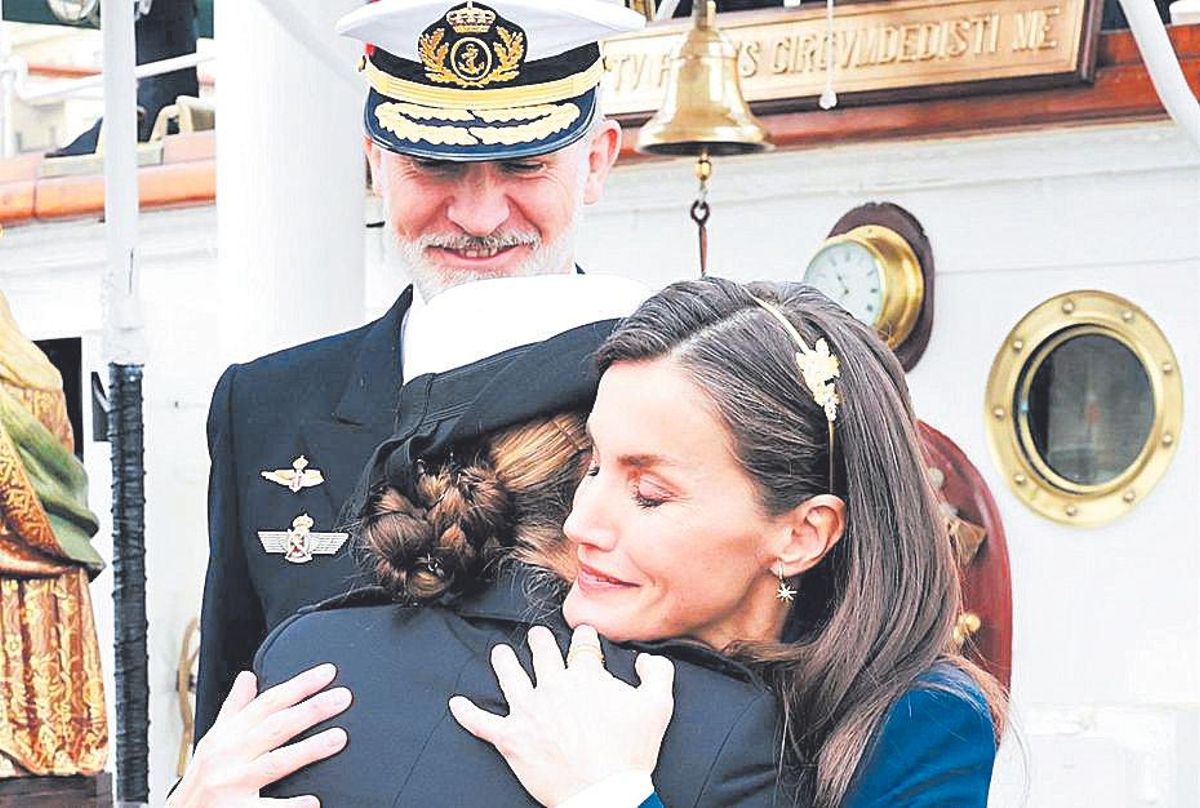“`html
The sailing vessel ‘Juan Sebastian Elcano’ is set to return to a Spanish port this Friday after departing last Saturday from Cadiz. The training ship of the Navy is scheduled to arrive in the capital of Tenerife with Princess Eleanor among its crew members. The ship’s stay on the island will extend until Monday afternoon, when it will depart for Gran Canaria.
Unless there are unforeseen circumstances, the training ship Juan Sebastian Elcano is expected to dock at the Los Llanos dock in Santa Cruz de Tenerife this Friday at 9 AM, just six days after setting sail from the Bay of Cadiz towards the Archipelago. Almost a week has passed since the Kings of Spain bid farewell to Princess Eleanor and Minister Margarita Robles, head of the Defence portfolio, who will greet the citizens gathered to witness the departure of the XCVII training cruise, in which the heir to the Spanish throne is being educated.
The stopover in mojo picón –Santa Cruz de Tenerife and Las Palmas de Gran Canaria– marks the first time that Elcano has anchored in national waters since leaving southern Spain last Saturday. His itinerary in the capital of Tenerife is planned for the 17th, 18th, 19th, and 20th, on which date he is slated to proceed to Gran Canaria.
The Archipelago is the inaugural stop on the training cruise for the future Queen of Spain
During the course of his stay in Tenerife’s waters, there are no formal events on the agenda, apart from a modest reception for Elcano scheduled for the evening of this Friday, which will be attended by key political figures, senior military officers, and notable individuals, all presided over by Captain Luis Races-Preys. It has not been confirmed whether Princess Eleanor, who is among the 76 midshipmen embarking on this 183-day voyage, will be present at this event. The intention of the Royal House is for the eldest daughter of Philip VI and Letizia to partake in the training during this journey, thereby excluding her from many of the formal activities planned at the ports visited by the flagship of the Navy. On this expedition, the ship will visit eight countries before returning to Spanish territory on July 7 in the port of Gijon.
Elcano will remain anchored in front of the Island Council of Tenerife and will be open to the public on Saturday and Sunday, undoubtedly becoming a weekend highlight for many residents of Tenerife. Another engaging option includes possibly encountering Eleanor of Bourbon while strolling in Garcia Sanabria, exploring Saint Christopher from La Laguna, a UNESCO World Heritage city, or purchasing souvenirs from the numerous shops lining Castle Street.

Leonor de Borbón in training before boarding the training ship. / Efe
Those fortunate enough to step aboard the brig-schooner will likely encounter the distinct atmosphere typical of a naval vessel, characterised by a potent aroma of fuel mingled with the alluring scent of fried food. This impression, however, is more psychological than factual.
The dietary needs of the more than 250 sailors aboard Elcano are overseen by a nutrition specialist to ensure essential nutrients (proteins, carbohydrates, and fats) are met for enduring demanding workdays. Savoury dishes such as paella and Serrano ham are staples of their culinary offerings, showcasing key elements of the national cuisine.
It remains uncertain whether, during their stop in the Canaries, they will venture to incorporate wrinkled potatoes with Canarian mojos (red or green) or a selection of local fish, particularly the delicious vieja. It has been confirmed, however, that churros and torrijas will grace their breakfast on Sunday, accompanied by sweeping views of the Plaza de España.

The Kings of Spain pose with their eldest daughter. / Efe
The daily routine aboard the oldest active military sailing vessel in the world is rife with challenges, particularly those stemming from spatial constraints that transform such a cruise into a remarkable adventure. As Elcano departs Spanish waters, a pivotal experience awaits the 76 midshipmen in training for their impending naval careers. Their journey will take them to Salvador de Bahia (Brazil), Montevideo (Uruguay), Punta Arenas and Valparaiso (Chile), Callao (Peru), Panama, Cartagena de Indias, Santa Marta (Colombia), San Domingo (Dominican Republic), and New York (United States), forming a route that is not a circumnavigation this time: only eleven occasions have all five continents been touched.
In the name of Elcano
The vessel that will be positioned parallel to the Tenerife Auditorium this morning bears its name in tribute to the Basque explorer Juan Sebastian Elcano (Guetaria, 1486 – Pacific Ocean, 1526), who is officially acknowledged as the first Spanish navigator to circumnavigate the globe. In reality, the Portuguese was tasked with this mission by the Spanish crown, notably Ferdinand Magellan, but his demise mid-voyage prompted a shift in leadership. Charles I mandated that the legendary accolade shine upon the training ship’s insignia Primus circumdedisti [the first to circumnavigate me], though that subject may require revisiting later. Indeed, Princess Eleanor is expected to disembark during the American leg of the journey to return to Spain and complete her maritime training aboard a frigate. Once Elcano is docked in a Spanish port [Gijón / July 3], the sister of infanta Sofia will reunite with her fellow trainees: this time, the group comprises members of the 427th class of the General Corps and the 157th of the Marine Infantry.
The sailing vessel will be anchored in front of the Cabildo de Tenerife until next Monday afternoon; it will be open for public visits on Saturday and Sunday from 9:30 AM to 2:00 PM and from 3:30 PM to 8:00 PM.
One of the notable accomplishments in the illustrious history of this ship involves the island as a secondary participant, as during the XCV cruise, it marked one of the nine occasions when Elcano traversed the Atlantic powered solely by its sails. This milestone occurred during a voyage between Santa Cruz de Tenerife…
“` and Rio de Janeiro (Brazil) and subsequently its 20 sails – comprising 3,150 square metres of fabric – were extensively utilised to commemorate a significant achievement from the past or even tailored for a cinematic narrative that reenacts the journeys undertaken by ancient navigators, who brought numerous days of glory to the realms of Spanish and Portuguese. The deep-rooted connection between Elcano and the Royal Family is yet another element that enhances this voyage, echoing a pattern already established with the former king (1958) and King Felipe VI (1987). During the last journey of the Prince of Asturias, the itinerary formulated as military exercises at sea included stops in The Palms, Gran Canaria, Tenerife, Rio de Janeiro (Brazil); Buenos Aires (Argentina); Montevideo (Uruguay); Salvador de Bahia (Brazil); Saint Dominic (Dominican Republic) and Baltimore (USA).
The Tale of a Coincidence
Long before construction commenced in 1925 at various shipyards in Cadiz, the initiative of Juan Sebastian Elcano might have been abandoned had a request to convert an old Italian sailboat, [Augustella], into a military vessel named Minerva—in tribute to the classical goddess of war, navigation and military strategy—failed. The proprietors of the Echevarrieta and Larrinaga company seized upon that well-known setback to conceive a design centred around four large masts: [Blanco, Almanza, Asturias, and Nautilus] retrieved from four former training ships of the Navy. The sailboat was launched on March 5, 1927, yet its reception was not formalised until August 17, 1928. From that point onward, it began accumulating nautical miles until it reached the 1,900,000 nautical miles in its history prior to embarking on January 11, Cadiz: an additional 18,000 nautical miles will be covered to arrive in Ferrol by July 9.

Doña Letizia embraces her daughter in the presence of King Felipe VI. / Efe
Over 20,000 sailors have trodden upon the deck of this sailboat, which only ceased its voyages amidst the Civil War [1937 to 1939]—large national flags were emblazoned on the fins and on the sides of the bow to deter enemy assaults, safeguarded by Spain’s neutrality—and on two further occasions related to maintenance tasks [1956 and 1978]. A significant portion of that crew must adhere to an academic curriculum comprising 18 subjects—the journey occurs during the third year of naval training—in which knowledge pertaining to navigation operations, meteorology, maritime law, naval history, tactics, and weapon systems coexists…
















